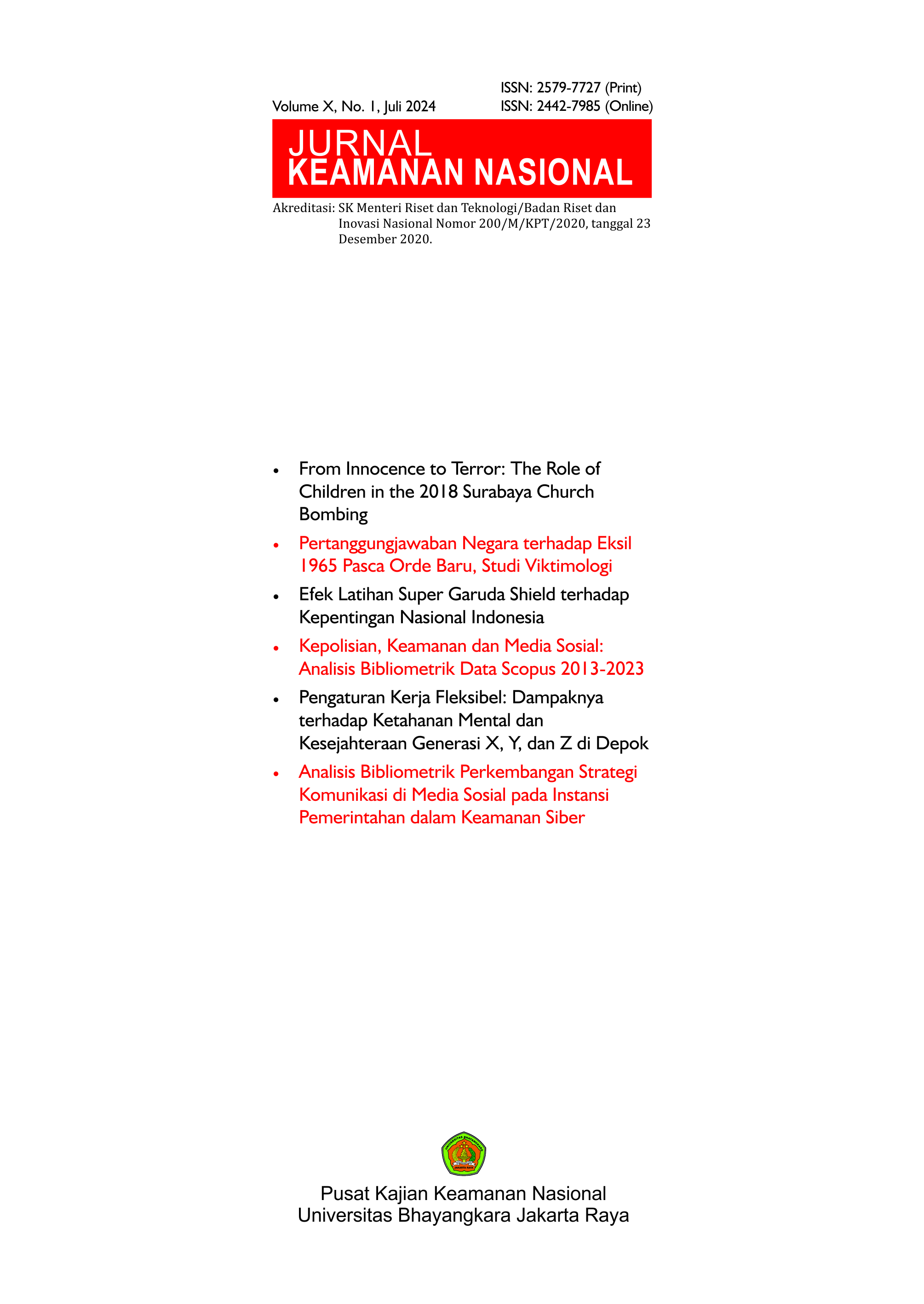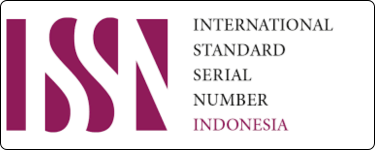From Innocence to Terror: The Role of Children in the 2018 Surabaya Church Bombing
Keywords:
Terrorists, Children, 2018 Surabaya Church Bombing, Actor, SecurityAbstract
Terrorism has experienced the development of the actors involved in it. Children are targets and new actors are being targeted to become cadres by terrorists, specifically by the Islamic State of Iraq and Syria (ISIS). The May 13, 2018, incident, the suicide bombing that occurred in Surabaya, East Java, involved four children as perpetrators. Four children who are siblings named Fadhil, Firman, Fadhila, and Famela have succeeded in creating public concern which creates a feeling of insecurity. This paper aims to analyze efforts to involve children as terrorist actors in the 2018 Surabaya Bombing case. The method used is a descriptive qualitative research method. Researchers collect primary data through interviews and secondary data from journals, books, and other writings on related issues. The results of this study found that the involvement of children as perpetrators of terror could occur after the child passed the six steps of the ladder for someone to become a terrorist by Fathali Moghaddam. The use of children as terrorists is due to several considerations, ranging from low cost, being able to attract media attention to being effective in physically touching targets.
Downloads

Downloads
Published
Issue
Section
License
Please read and understand the copyright terms for submissions to this journal.
Copyright Notice
The Jurnal Keamanan Nasional is under the Creative Commons Attribution 4.0 International (CC-BY 4.0) License, according to which:
1) Authors retain copyright and grant the journal the right to first publication, with the work simultaneously licensed under the Creative Commons Attribution (CC-BY 4.0) that allows the sharing of articles published with the acknowledgement of authorship and the initial publication in this journal.
2) The authors are authorized to make additional contracts separately for distribution of the version of the work published in this journal (for example, publication in an institutional repository or as a chapter of the book), as long as there is recognition of authorship and initial publication in this journal.
3) Authors are authorized and encouraged to publish and distribute their work online (for example, in institutional repositories or on their personal pages) at any time before or during the editorial process, as it increases the impact and reference of the published work.












